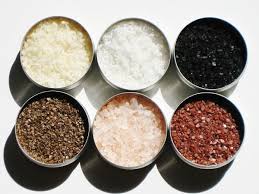
The therapeutic value of mineral salts for human health has only been recognized in recent years. There are over 100 different minerals, and at least 50 of them should be considered vital for metabolism, just like vitamins.
These elements are found in blood, tissues, organs and body fluids, where they are involved in numerous enzymatic and metabolic processes.
The body needs many minerals called essential minerals. Essential minerals are sometimes subdivided into essential or macro-minerals and trace elements or trace elements.
These two groups of minerals are equally important, even if they are only present in very small amounts (traces), and their functional significance is not proportional to the amount found in the body.
An imbalance in the presence of minerals in the body can be serious and lead to various pathologies and, if well known are those that arise from iron deficiency, anemia, or the importance of iodine for the normal functioning of the thyroid gland, the same can be said for others symptoms that we often ignore or misunderstand.
Example? What do you do in case of eyelid flickering? Most of us do nothing or just use eye drops, but listen to what the ophthalmologist says. Lorenzo Roveda em … usually eyelid tremors are associated with a deficiency of potassium and magnesium. ”
At the moment, many are wondering how to be sure of getting the right amount of minerals, but don’t worry, everything we need is present in our everyday products.
A healthy and balanced diet avoids mineral deficiencies.
The following two tables show the minerals, their metabolic functions, and the foods with which they should be taken in the correct doses.
macrominerals
|
Basic minerals |
Sources |
function |
| Sodium | Cooking table salt, soy sauce, bread, vegetables and meat | Required for proper fluid balance, nerve transmission and muscle contraction |
| Chlorine | Cooking table salt, soy sauce, convenience foods, meat and vegetables | Essential for fluid balance and stomach acidity |
| potassium | Meat, milk, fruits and vegetables, whole grains, fresh legumes | Required for proper fluid balance, nerve transmission and muscle contraction |
| Football | Milk & Dairy Products, Tofu & Fortified Soy Milk | Essential for bones, teeth, muscles, nervous system, blood clotting |
| Phosphorus | Meat, fish, poultry, eggs, milk | regulates the acid-base balance of the body |
| magnesium | Walnuts and seeds, legumes, leafy vegetables | regulates muscle contraction and nerve transmission |
| Sulfur | meat, poultry, fish, eggs, legumes, nuts | important for protein synthesis |
Trace elements (trace elements)
The body needs trace minerals in very small amounts. Note that iron is considered a micromineral even if the amount required is higher than other microminerals.
|
Minerals |
Sources |
Functions |
| hardware | red meat, fish, poultry, crustaceans, eggs, legumes, dried fruits, cereals | Part of the hemoglobin present in red blood cells that carries oxygen in the body; it is necessary for energy metabolism |
| zinc | Meat, fish, poultry, whole grains, vegetables | Part of many enzymes, it has the function of taste perception, wound healing, fetal development, puberty, immune health |
| iodine | bread, dairy, seafood, iodized salt | Contained in thyroid hormone that helps regulate growth, development and metabolism |
| selenium | Antioxidant | Meat, fish, cereals |
| copper | Legumes, Nuts & Seeds, Whole Grains, Drinking Water | Part of many enzymes required for iron metabolism |
| manganese | Widespread in food, especially vegetables | Part of many enzymes |
| fluorine | Drinking water (fluoride or naturally containing fluoride), fish and most teas | Participates in the formation of bones and teeth, helps prevent tooth decay |
| chrome | liver, brewer’s yeast, whole grains, nuts, cheeses | Work closely with insulin to regulate blood sugar |
| molybdenum | Legumes, breads and cereals, green leafy vegetables, milk, liver | Some enzymes |
In our body, in very small quantities, there are also nickel, silicon, vanadium and cobalt.



